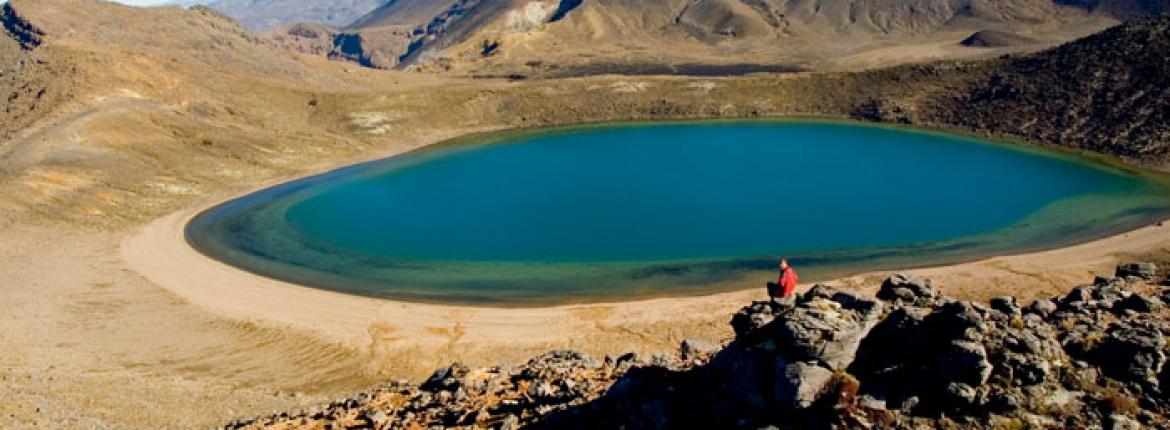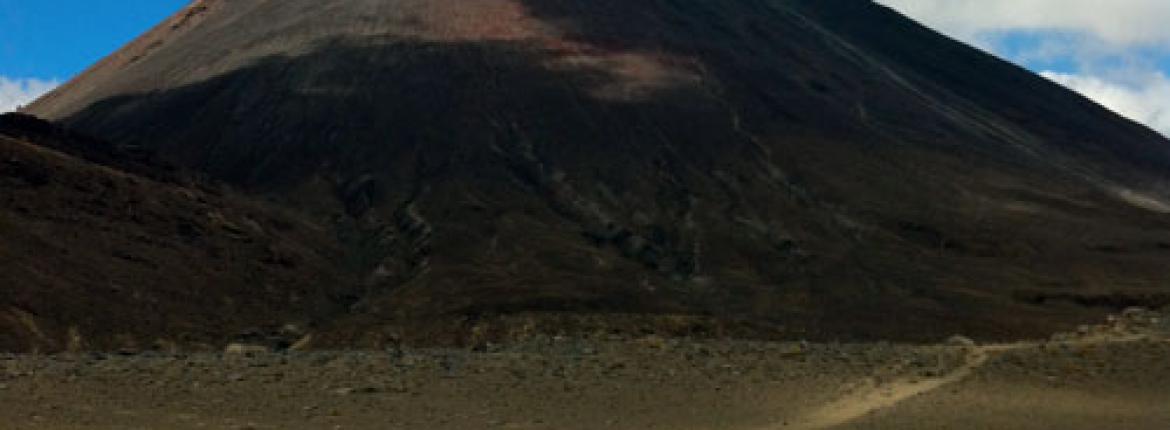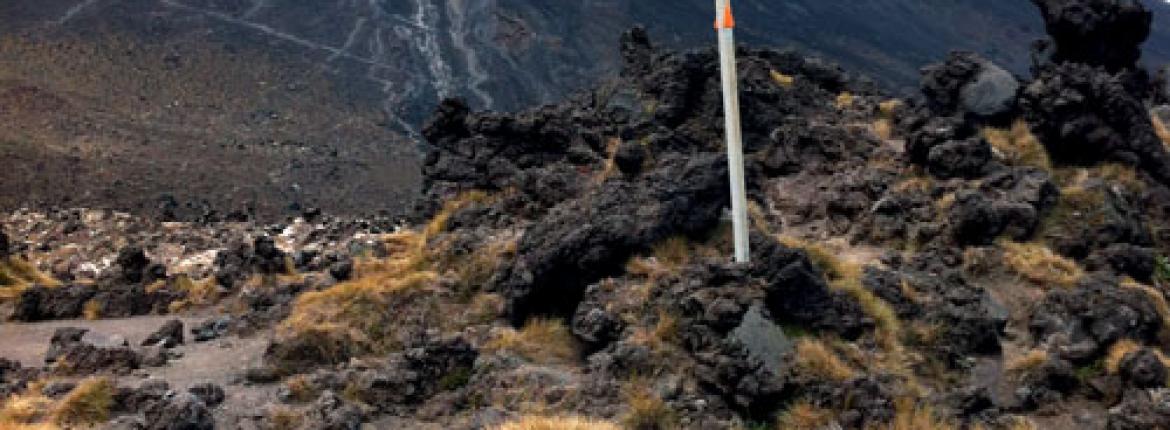I stand on my hotel room balcony, contemplating tomorrow. On the far side of the lake, a wisp of steam hangs in the sky.
There is an extra edge to my experience of walking the Tongariro Crossing because of that feathery wisp. It confirms the news: the mountain has blown a fuse. But, even when such clear signals are not being sent, the truth is: this is active volcano territory.
Six Americans, two Australians, an Englishman, two guides and I set out first thing. It’s a kind start along gently sloping terrain, following a path meandering between low, pretty plants – alpine flowers, coloured grasses, moss. Black and grey lava in crumbly, brittle chunks litters the ground, creating a moonscape. A small stream, stained from iron in the rock, leaves red streaks in its wake. Above us, Mount Tongariro and the cone of Ngauruhoe loom.
The second stage is not so kind. It involves many, many steps. I make the mistake of looking up to see how far there is to go – which is frankly dispiriting. Some young people run past. Uphill.
The day is clear and hot; my lungs are full to the brim of bright, clean air. Occasionally a small, soft wind blows in, saving me. Cloud blinks out the sun for brief relief.
Up high, the view expands. Way, way in the distance, cousin Taranaki shimmers dimly.
Looking back on the plateau we have crossed, a thin line of path slices across the flat. We had climbed again, quite steeply, over scree and lumpy rocky outcrops, stopping at narrow places to let people pass. Some were coming the other way, heading down. They must have set out pre-dawn.
Up higher the view changes again – enveloping deep crimson vents, lakes the colour of turquoise glass and rocks the size of small hills, stained by weather and time. I sit to eat lunch, conscious of the turmoil going on under the surrounding surface. Scientists are constantly measuring, checking and analysing, understanding that varying temperatures are proof of building pressure, but not knowing when or where the stress might blow out.
We see helicopters flying the experts in with their testing kits. The recent blow-out of Te Maari crater took people by surprise, even those who live with this landscape, guide visitors through it, watch it closely and try to read its body language. They’re upbeat and excited about the unpredictability of the place – they have to be – but their livelihood depends on the mountain staying calm enough for people to walk it. Grateful that it’s kept its cool for my visit, I strike out for the trek down.
It is one of the most extraordinary places to be. Walking through an ashy palette, over charcoal-hued rocks, the massive volcanic cone the colour of blood agate filling the sky; unlikely splashes of teal and rusty ochre and dusky gold adding to an other-worldly mood. I decide it’s ceramic-like, with salt glazes splashed around, on a massive scale. It’s like a mountain scene that’s been punked.
From the far side of the lake, back in Taupo, I look back to where I’ve been. The wisp is still there, the mountain is still shifting and changing. I feel a little changed, too, which is to be expected when you’ve been to another planet.
Reported by Kathryn Webster for our AA Directions Summer 2013 issue






